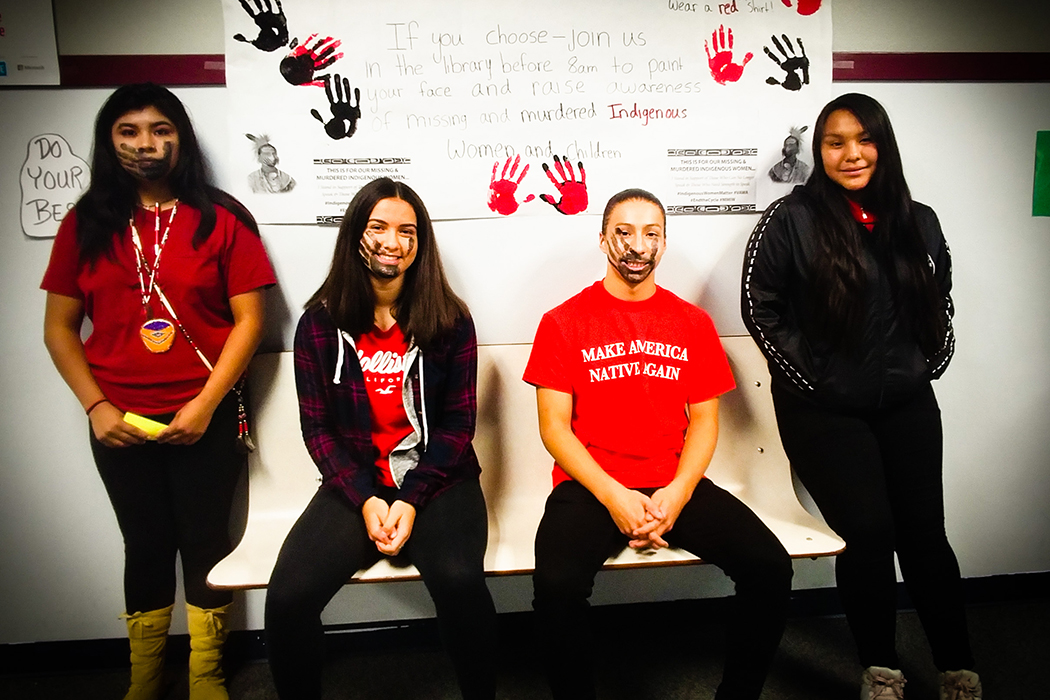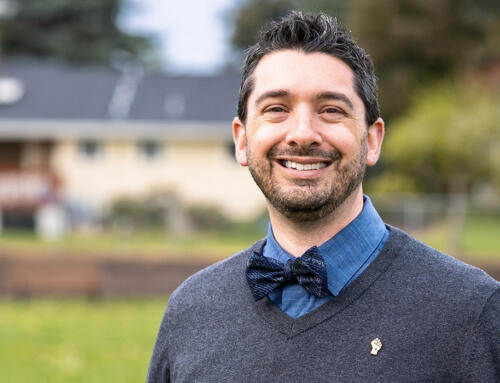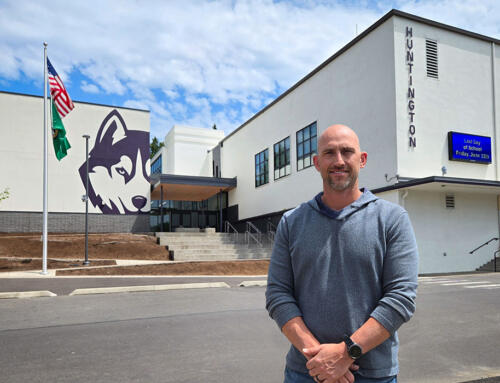In honor of Indigenous People’s Day, members of Lyle High School’s Culture Club made a presentation to six different classes on Monday, October 8.
Representing the local Warm Springs and Yakama tribes, as well as Southeast Alaska Tlingit, Ojibwa/First Nation Batchewana from Canada and the Shoalwater Bay Tribe, the four students shared information about their traditional dances, clothing and food, many of them unique to the areas their tribes originated. One student talked about harvesting wild rice in Minnesota, while others talked about gathering berries, digging roots and harvesting salmon. In Southeast Alaska, the Tlingit traditionally subsisted almost entirely on foods gathered from the ocean.
School counselor Julie Larson also talked with students about the meaning of Indigenous People’s Day, which honors the First Peoples of this nation. The Culture Club met with Principal Lori Smith to get permission to wear red shirts on this day in honor of our Native culture and ancestors. All students and staff were invited to wear a red shirt in support of their Indigenous counterparts.
In recognition of the large number of missing and murdered Indigenous women, some students chose to have a handprint painted on their faces, representing the importance of speaking for those who no longer have a voice. The handprint has great meaning in the Native American culture.
To wrap up the day, some students attended the fourth annual observance of Indigenous People’s Day in Hood River Oregon, where they heard speakers from both the Yakama and Warm Springs tribes.
“The creativity and leadership shown by the Culture Club students is remarkable,” Superintendent Ann Varkados, Ed.D said. “Lyle is fortunate to have these young leaders among its students.”
November was designated National Native American Heritage Month by President George H. W. Bush in 1990. The Culture Club plans to have more activities during the month of November to help raise awareness of Indigenous people’s contributions and enormous significance, and to recognize the rich diversities of the cultures that existed in the Americas even before the arrival of European, African and Asian cultures.





 ESD 112 equalizes educational opportunities for learning communities through innovative partnerships, responsive leadership, and exceptional programs.
ESD 112 equalizes educational opportunities for learning communities through innovative partnerships, responsive leadership, and exceptional programs.